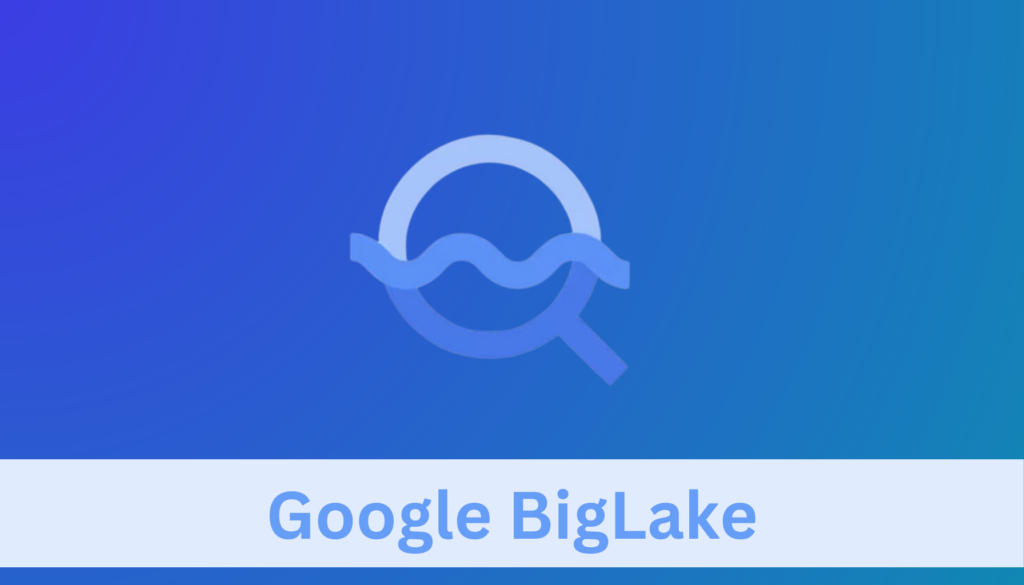What is Google BigLake?
Google BigLake is designed to simplify and enhance the way businesses manage and analyze large-scale data. As a key player, BigLake offers a unified platform for handling diverse data types across various environments. This service stands out for its ability to integrate seamlessly with existing storage systems, providing scalable and secure data management solutions. It caters to the ever-growing need for efficient data processing and analysis, offering a suite of tools that empower businesses to gain valuable insights from their data.
Whether for analytics, machine learning, or data warehousing, BigLake’s focus on versatility and performance makes it an essential asset for any data-driven organization.
What are the features of Google BigLake?
1. Unified Data Access
BigLake offers unified data access, a feature that simplifies data management across various storage systems. It allows users to access and analyze data stored in multiple formats and locations without the need for data movement or transformation. This capability is essential for businesses dealing with large, diverse datasets, enabling seamless integration and analysis across different platforms.
2. Flexible Storage Options
BigLake’s flexible storage options are suited for varied business needs. Users can choose between different storage classes to balance cost and performance, depending on their specific requirements. This flexibility ensures that businesses can optimize storage for efficiency and cost-effectiveness, whether for short-term needs or long-term data retention.
3. Integrated Data Governance
Data governance is a critical aspect of data management, and BigLake excels in this area. It provides robust tools for managing data access, security, and compliance, ensuring that data is used responsibly and following regulatory requirements. This feature is particularly valuable for businesses that handle sensitive or regulated data.
4. Performance Optimization
Performance optimization is another key feature of BigLake. It utilizes advanced analytics and machine learning algorithms to improve query performance, reduce latency, and ensure efficient data processing. This results in faster insights and improved decision-making for businesses.
5. Scalability
Scalability is a core aspect of BigLake, allowing businesses to scale their data management and analysis capabilities as their needs grow. This feature is crucial for companies that experience fluctuating data volumes, ensuring that they can handle large datasets without compromising on performance.
6. Monitoring and Analysis Tools
Finally, BigLake provides comprehensive monitoring and analysis tools. These tools enable businesses to track usage, performance, and costs, facilitating informed decisions about data management strategies. The insights gained from these tools can help optimize operations, reduce costs, and improve overall efficiency.
Each of these features plays a crucial role in how BigLake serves businesses in managing, analyzing, and gaining insights from their data. The following sections will delve deeper into the pricing structure, cost optimization strategies, and how to effectively implement and benefit from BigLake in your data-driven initiatives.
Google BigLake Pricing Overview
Pricing Components
BigLake’s pricing structure includes several components that comply with different usage scenarios:
- Storage Costs: Charges are based on the amount of data stored in BigLake, with different pricing for various storage classes.
- Query Processing Costs: Fees for data processing and queries, depending on the complexity and volume of the data processed.
- Data Transfer Costs: Applicable for transferring data in and out of BigLake, especially across different regions or networks.
Pricing Models and Plans
BigLake offers versatile pricing models to suit diverse business needs:
- On-Demand Pricing: Ideal for businesses with variable data usage, allowing them to pay only for the resources they use without long-term commitments (one- or three years).
- Reserved Instances: Suitable for predictable workloads, offering lower prices in exchange for a commitment to a certain level of usage over a specified period.
What is included in Google BigLake Free Tier?
BigLake includes a free tier, which is beneficial for new or small-scale users:
- Storage: 10 Gib of data storage per month at no cost, ideal for small datasets or trial purposes.
- Free Queries: Allows users to run 1 TiB of queries per month without incurring charges.
- BI Engine: Up to 1 GiB free capacity usage for Locker Studio users.
Understanding the pricing components, models, and free tier benefits of BigLake is crucial for effective budgeting and cost management. In the next section, we’ll explore strategies to optimize these costs, ensuring you get the most out of your investment in BigLake.
How to Perform Cost Optimizations in Google BigLake?
Optimizing costs in BigLake involves strategic planning and efficient utilization of resources. Here are key strategies to help you manage and reduce costs while maximizing the value of BigLake:
- Efficient Resource Utilization: Monitor your data usage patterns and optimize resource allocation accordingly. Use BigLake’s analytics tools to identify and eliminate underutilized or unnecessary resources, ensuring you’re only paying for what you need.
- Scheduling for Cost Savings: Implement scheduling for your data processing tasks. Run high-compute tasks during off-peak hours or when costs are lower, leveraging BigLake’s ability to handle variable workloads efficiently.
- Utilizing BigLake’s Unique Features: Take full advantage of BigLake’s features like unified data access and flexible storage options. This approach minimizes the need for additional tools and services, leading to cost savings.
- Choosing the Right Pricing Model: Select the pricing model that best fits your usage patterns. If your data usage is predictable, consider reserved instance plans for lower rates. For variable usage, the on-demand model might be more cost-effective.
- Monitoring and Adjusting Usage: Regularly review your BigLake usage and spending. Use BigLake’s monitoring tools to track your expenses and adjust your usage strategy as needed to avoid unnecessary costs.
By implementing these strategies, you can ensure that your use of BigLake is not only effective but also cost-efficient. These approaches will help you leverage BigLake’s capabilities to the fullest while keeping expenses under control. In the concluding section, we’ll summarize the key aspects of BigLake and suggest further steps for implementing this service effectively.
Conclusion
BigLake offers a comprehensive and flexible solution for managing and analyzing large-scale data, with features like unified data access, flexible storage options, and integrated data governance. Understanding its pricing structure and utilizing cost optimization strategies are essential for maximizing the benefits of this powerful tool. For effective implementation and to fully leverage BigLake’s capabilities, it’s advisable to consult with professionals. They can provide tailored advice and strategies, ensuring that BigLake aligns with your specific business needs and objectives.
Ready to Optimize Your Google BigLake Usage?
[Reach out for specialized guidance] to ensure your setup is both cost-effective and high-performing.

